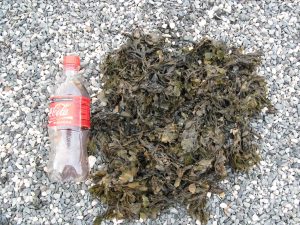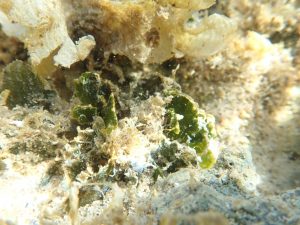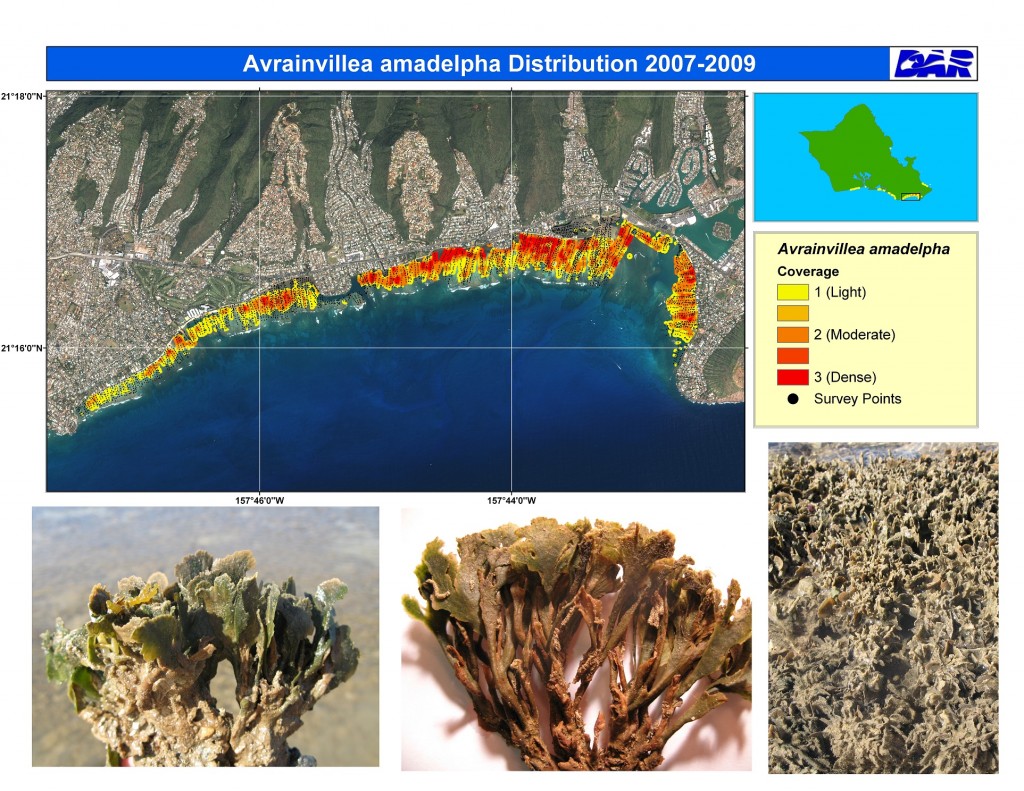Leather Mudweed
Leather Mudweed (Avrainvillea lacerata)
Description:
- Fan shaped blades attached to single stalk (EOR, 2015)
- Blades are green in color, usually covered with sand and appear brown (EOR, 2015)
Habitat:
- Found attached to coral, rocks, or in flat sandy areas with low water motion (EOR, 2015)
Impacts & Concern:
- High tolerance to environmental extremes (Veazey et al., 2019)
- Can change community diversity of reefs, lowering fish and invertebrate populations (Veazey et al., 2019)
- Creates mud layer on top of sand which changes nature of habitat (UH Botany Dept., 2001)
- Outcompetes native algae, corals, and seagrasses (UH Botany Dept., 2001)
Introduction:
- First discovered in Hawaiʻi in 1981 (Veazey et al., 2019)
- Mechanism of introduction is unknown (UH Botany Dept., 2001)
Unknowns:
- Shows low potential to reproduce via small fragmentation, however is highly invasive which raises questions about if fragmentation is the primary form of reproduction (Albright, 2017)
Distribution in Hawaii:
- Kauai: Present
- Oʻahu: Present in Diamond Head, Waikīkī, Koko Head, Kahe Point
- Molokai: Present
- Lanai: Present
- Maui: Not documented
- Big Island: Not documented
References:
- UH Mānoa (2001) Avrainvillea amadelpha. Marine Algae of Hawaiʻi. https://www.hawaii.edu/reefalgae/invasive_algae/chloro/avrainvillea_amadelpha.htm
- Eyes of the Reef (EOR). (2015). Leather Mudweed (Avrainvillea amadelpha). Eyes of the Reef Hawaiʻi. https://eorhawaii.org/education/marine-invasive-species/leather-mudweed/
- Veazey, L., Williams, O., & Wade, R. (2019). Present-Day distribution and potential spread of the Invasive Green Alga Avrainvillea amadelpha around the Main Hawaiian Islands. Front. Mar. Sci., 6. https://doi.org/10.3389/fmars.2019.00402
- Albright, S. (2017). A Growing Problem: The Missing Link for Ecological Success by the Invasive Avrainvillea. [Bachelorʻs Honors Project, University of Hawaiʻi Mānoa]. https://core.ac.uk/download/pdf/211323725.pdf


